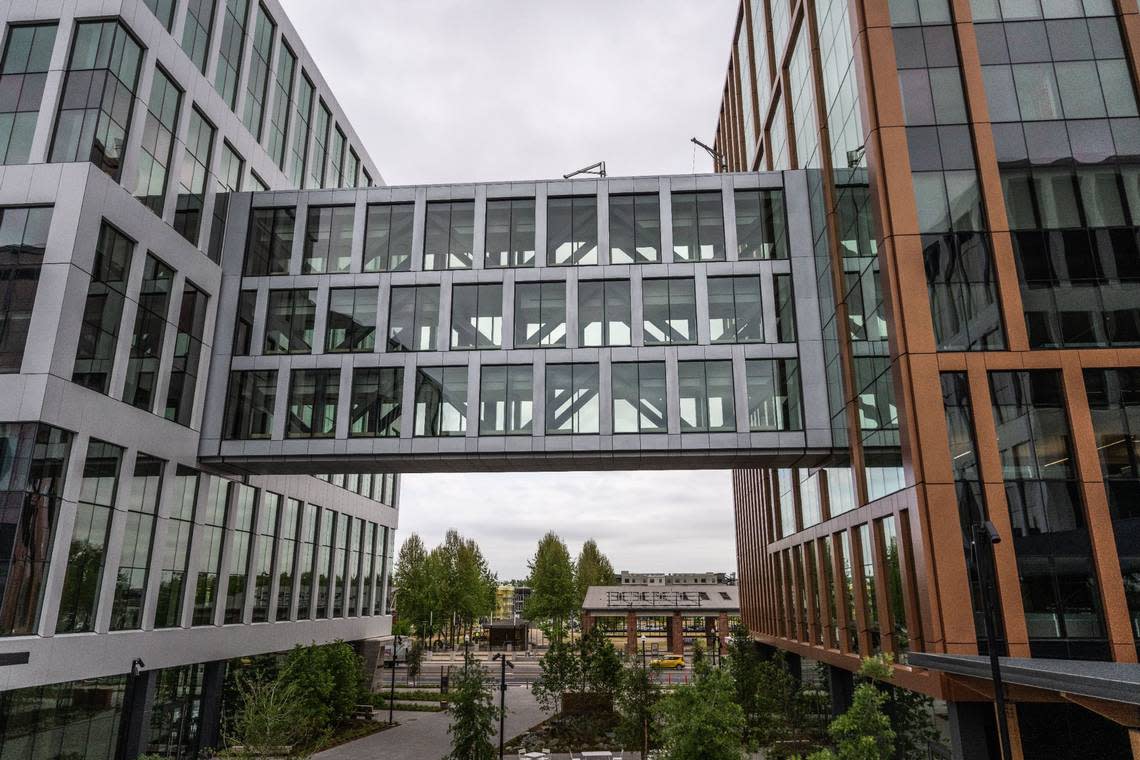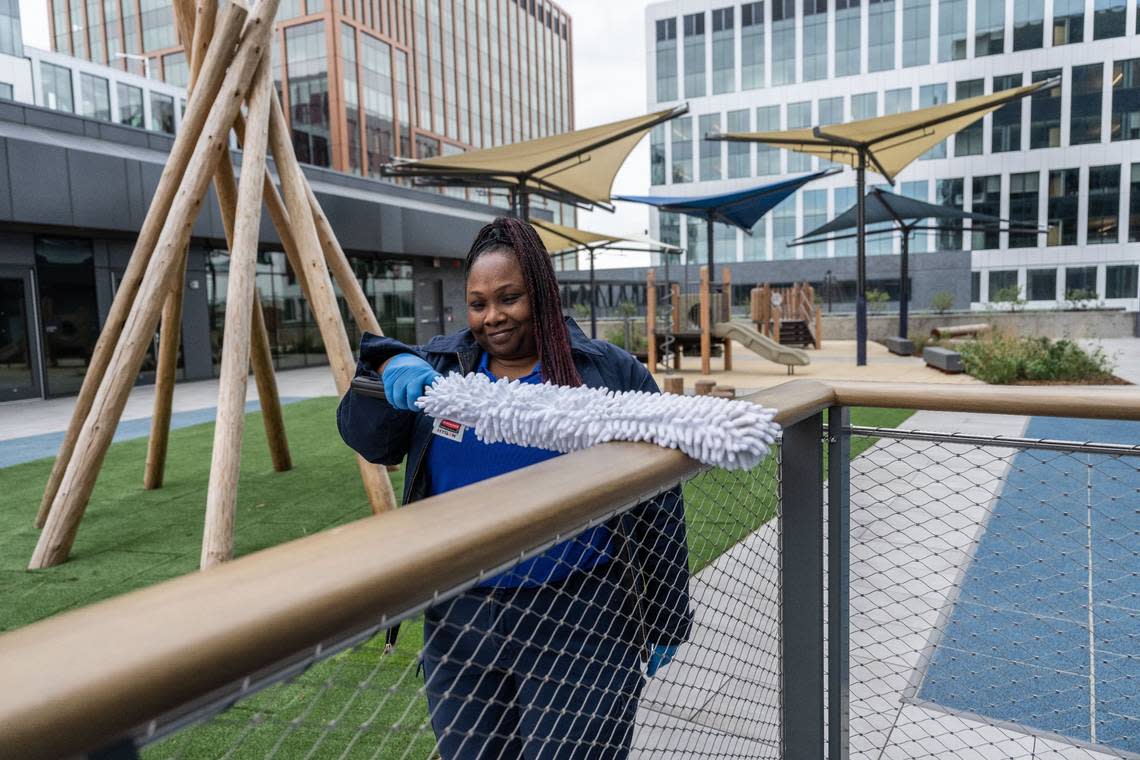California’s largest state development unveiled in Sacramento, honors legendary state worker
The public got a glimpse of the River District’s newest landmark Wednesday, named in tribute to a legendary state worker and made up of a collection of buildings tailored for the next generation of state offices.
The gleaming May S. Lee State Office Complex — a $1.03 billion, 1.25 million-square-foot project that the Department of General Services says is California’s largest state development — replaced the Office of State Publishing on the corner of Richards Boulevard and North Seventh Street, across from Township 9.
The 17.3-acre site has four buildings — the highest at 11 stories — set to handle more than 5,000 state workers across seven departments. The behemoth development is the country’s largest all-electric, zero-carbon office complex, according to ZGF Architects, which designed the property along with Dreyfus + Blackford and Hensen Phelps. The general contractor was Kitchell Northern California.
“This building is the workplace of the future,” said Ted Hyman, ZGF’s managing partner, pointing to the amenities such as the center court plaza and skyways connecting some of the spaces, as well as a dining area, gym, daycare center and auditorium to accommodate 300 people.

State workers held a ribbon-cutting ceremony and dedication in honor of May Lee, California’s longest-serving civil servant who died last year at 102 after nearly 80 years of state service within the Department of General Services, which manages state property among other functions necessary for state government to run.
Although Lee “retired” in 1990, she continued to work as a retiree — known as a “retired annuitant” — four days a week. And, after exhausting her paid hours each fall, she’d continue to work as an unpaid volunteer, she told The Sacramento Bee previously.
A number of Lee’s relatives attended the ceremony, including her nephew Chris Lee, who will work in the complex as an employee of the California Department of Tax and Fee Administration.
“I’m pretty excited to see her name on the building every day that I come in,” Chris Lee said. “This building really says a lot about her as a public servant. Seeing this today is just amazing.”
Lee said that his aunt’s longevity means that he’s not even halfway done with his career, and he might not even make it to a third of the 79 years she served.
The building project that bears her name began nearly four years ago, said Jason Kenney, the department’s chief deputy director. He noted the development was completed well ahead of schedule and $47 million under budget.
According to the department, the project is part of DGS’ 10-year sequencing plan to renovate and replace state office buildings in the capital region. The department has also applied the building as LEED Gold certified for its sustainable design and operation by the U.S. Green Building Council.

In addition to CDTFA, the tenants that will occupy complex at 651 Bannon St. will include the California Department of Health Care Access and Information, the Department of Housing and Community Development, the state’s Civil Rights Department, the Department of Financial Protection and Innovation, the Department of Real Estate and the state Commission on Teacher Credentialing.
Workers will start moving into the buildings in May — full occupancy is expected by July and comes as state workers have been mandated to return to in-office work at least two days a week starting this summer following months of telework due to the COVID-19 pandemic.
“It’s a civic building,” Hyman said. “And government buildings should be civic, it should give back to the public.”
The Bee’s Hector Amezcua contributed to this story.
